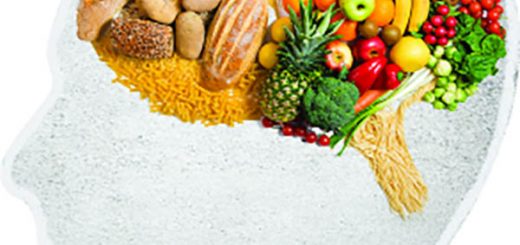Bangladeshi items that have GI status -Fatema Tania
GI status means geographic indication, which is very important and financially beneficial for any country. The World Intellectual Property Organization is assigned to provide GI recognition to different products from different regions. Bangladesh has gained GI status on 15 products. The GI status of any product is the only way to get a genuine, distinctive, high-quality product that is linked to its origin. To identify the origin of any product means to gain ownership of productivity. This ownership belongs to the specific geographical area of a country, its history, culture, environment, special skills of people, etc. This status also opens up the financial benefits of a country at the national and international levels. GI status is called the foundation of sustainable development because it makes connections between local and global innovation. The Department of Patents, Designs, and Trademarks of the Bangladesh government works to achieve GI accreditation and certification. It is a long process to earn status on 15 products. Jamdani was the first Bangladeshi product to be granted GI certification in 2016. After that, Bangladesh also achieved GI certificates for other products.
Jamdani
Jamdani Saree was the first Bangladeshi product to achieve Geographical Indicator (GI) status. On November 18, 2016, Jamdani Saree gained this recognition. The specialty of this saree is that it is entirely hand-woven. Traditional fine-cloth muslin was the origin of modern jamdani. During the ancient period in Bengal, muslin was manufactured in the Sonargaon region beside the river Shitalakshya. Throughout the years, fine Muslin clothes have changed and turned into jamdani. There are two types of jamdani in Bangladesh: slik jamdani and cotton. Generally, jamdani refers to sarees, but dresses, Punjabi, kurtas, and curtains are also made from jamdani.
Sonargao, Narayangonj, is the birthplace of jamdani. Thousands of people in this area were traditionally engaged in weaving jamdani. The prices of jamdani usually range from thousands to several lakhs. The prices depend on thread, design, and quality. Different boutique companies also manufacture jamdani in their factories. Jamdani sarees are also exported to different countries. Bangladesh Small and Cottage Industries Corporation set up a special zone ‘Jamdani Naga’r, in Rupgonj at Narayangonj.
Hilsha
Hilsha is the national fish of Bangladesh, and without Hilsha, we can’t celebrate Pohela Boishak (Bengali Naboborso). In 2017, Hilsha achieved GI recognition, and the application was forwarded by the Department of Fisheries of Bangladesh. Hilsha is also known as the king of fish. Different kinds of Bengali curry are made from Hilsha fish, and their taste and smell are fantastic. Hilsha fish contain healthy fat, carbs, minerals, and omega-3 fatty acids. Every year, Bangladesh exports a massive amount of Hilsha fish to different countries and earns money. Hilsha is found in the Padma, Meghna, Manpura Dwip, Arial Kha, Rupsha, and Andharamanik rivers, bays, and seashores. But Hilsha fish, caught from Padma, has been great in the test.
Khirsapati Mango of Chapainawabganj
Khirsapati Mango of Chapainawabganj is the 3rd GI recognition product of Bangladesh, and the Agricultural Research Institute of Bangladesh applied for this recognition in February 2017 and granted it in January 2019. Khirsapati mango is also known as Himsagar. It’s a very delicious, juicy, and aromatic mango. It’s a medium-sized mango—less than five. Kirshapati mango starts ripening at the beginning of June. In Bangladesh, the areas of Chapainwabganj, Shibganj, and Gomstapur upazila have commercially cultivated khirshapati mangos.
Dhakai Muslin
Dhakai Muslin is called the pride of Bengal. The Bangladesh Handloom Board applied for GI accreditation in January 2018 and achieved it in June 2021. Dhakai Muslin is 100% cotton and very lightweight. It’s also very fancy, smooth, and transparent. Once upon a time, muslin was used to export from Bengal to other countries. The finest muslin was made of special ‘Phuti’ cotton, and this cotton was grown beside the area of the river Sitalakhya. During British rule, this finest Muslin industry was destroyed, but after independence, muslin started regaining its glory. The government is also taking different initiatives to re-establish the glory of Dhakai Muslin.
Rajshahi Silk
Rajshahi silk is another marvelous and gorgeous traditional fabric from Bangladesh. It’s a very soft and comfortable fabric for all seasons. In 2021, Rajshahi Silk got the GI trademark, and an initiative was taken by the Bangladesh Silk Development Board. There are three varieties of Rajshahi silk such as Mulberry, Tassar, and Endi silk. Rajshahi silk is made from silkworms, and this kind of silkworm feeds on mulberry leaves. Silkballs are made from the saliva of silkworms that is secreted from their mouths. After weaving, these fabrics become light, shiny, sober, and comfortable.
Shatranji of Rangpur
The Shatranji of Rangpur achieved a GI certificate in June 2021, and the BSCIC applied for this accreditation. Shatranji is a special kind of carpet manufacturer in the Rangpur area. Shatranji is considered a symbol of the aristocracy of rich people. Floor mats, wall mats, door mats, prayer mats, bags, etc., are made from the Shatranji.
Kalijira rice of Bangladesh
Kalijira rice is very small and aromatic. Bangladesh Rice Research Institute applied for recognition, and it was granted in June 2021. Different festive items like ‘Polau’, ‘Payes’, ‘Jordan’, etc. are made from this fragrant rice. The Mymensingh region is the producer of this aromatic rice.
Kataribhog in Dinajpur
Kataribhog Rice of Dinajpur achieved a GI certificate in June 2021, and Bangladesh Rice Research Institute applied for this approval. The key features of rice are thin, scented, and curved. Kataribhog rice is produced in Dinajpur, Mymensingh, Tangail, and Sylhet districts. But the birthplace and origin of Kataribough rice are in Dinajpur. Different delicious rice items are also made from Kataribhog rice in Dinajpur.
White Clay (Sada Mati) of Bijoypur
White clay is one kind of valuable mineral. White clay is used for making ceramic items, sanitary wires, glass, and tiles. White clay (‘Sada Mati’) is excellent in quality naturally. In 2017, the Netrokona district administration office applied for GI status for White Clay, and in 2021, it gained status.
Bagda Prawn of Bangladesh
Bagda shrimp is the best kind of shrimp. It is also a very flavorful saltwater fish and is produced in the southern districts of Bangladesh. Bangladesh exports bagda shrimp and earns huge amounts of money every year. It’s also known as the white gold of Bangladesh. The Department of Fisheries applied for GI status for bagda shrimp in 2019, and recognition was approved in 2012.
Fazli mango of Rajshahi-Chapainawabganj
The Fazli mango of Rajshahi-Chapainawabganj is famous for its great taste. It is produced in Rajshahi and Chapainawabganj districts. Rajshahi Fruit Research Centre and Chapainawabganj Krishi Association submitted an application for GI recognition, and in 2022, recognition was achieved.
Yogurt from Bogra
Yogurt of Bogra is a traditional Bengali sweet item that’s famous around the world. It’s very delicious and is found only in Bogura. It’s also known as ‘Nawabi Doi’. Yogurt from Bogra was recognized as a GI product in June 2023. The Department of Patents, Designs, and Trademarks gives recognition certificates, and the Intellectual Property Association grants this recognition.
Tulsimala Rice from Sherpur
Tulsimala is one kind of aromatic rice that is cultivated in the Sherpur district of Bangladesh. In 2023, Tulsimala Rice got GI certificates for the application of the Department of Agriculture Extension (DAE). After this recognition, farmers got the inspiration to increase the cultivation of Tulsimala rice.
Ashwina and Langra mangoes from Chapainawabganj
Ashwina and Langra mangoes from Chapainawabganj were recognized for GI status in June 2023. These mangoes are delicious and juicy. Langra variety mangoes are also produced in Malda, West Bengal. India also applied for GI for their Langra mangoes. However, Bangladesh was able to achieve this status because of the quality and sweetness of the mangoes.
Natore’s Kachagolla
Sweets are called the heart of Bengali cuisine. Bangladesh has many signature varieties of sweet items in every region. Kachagolla is made from curdled milk, and it’s a very soft and delicious dessert from Bangladesh. Natore’s is the birthplace of Kachagolla, and it’s also a traditional dessert in Bangladesh. In 2023, Natore’s Kachagolla achieved GI status. The Department of Patents, Designs, and Trademarks ensured this status.
Now, Bangladesh has ownership of 15 GI products, and a few products are also in the process of gaining GI status. GI status is helping to preserve the heritage, and no one can modify or duplicate those products. It increases the quality of production and also encourages the producer to produce or cultivate original products.

















Recent Comments